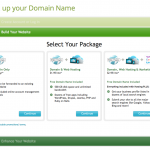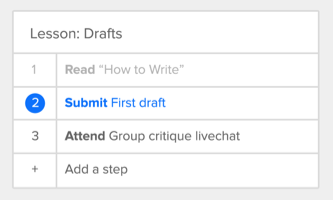A registrar is a lot like a prostitute in that they both take your money, the difference being that the hooker tells you in advance you’ll be screwed.
Okay, that’s a little harsh. Prostitutes don’t try to sell you useless add-ons while pitching their service: “Would you like to buy some shampoo to go with your oral sex? Howabout you pay me extra and I’ll black your name outta my little red book? And for an additional fee I’ll provide you with your own phone number, too!”
But while they’re all solicitous in their propositions – often to the point of annoyance – the domain name registrar can also keep you in bondage for years to come. For most of us, registrars are a necessary evil, someone we never really wanted to be with in the first place.  Experience helps us to understand what each domain name registrar offers. Our focus on five popular domain name registrars may help you choose the best answer to this prevailing question: Are domain registrars worse than hookers?
Experience helps us to understand what each domain name registrar offers. Our focus on five popular domain name registrars may help you choose the best answer to this prevailing question: Are domain registrars worse than hookers?
Prostitutes don’t hold you hostage
One of Blotter’s clients is being held hostage by the registrar Melbourne IT, an Australian-based company specializing in affiliate registrars. After repeated attempts to contact the company at https://www.melbourneit.com.au/contact-us/ as well as multiple phone calls to their support line at +61 3 8624 2300, this registrar has refused to unlock the domain name and proceed with sending the authorization code. The problem resulted from a mismanaged alliance between Melbourne IT and the now defunct contact at AT&T, Inc.
It appears the Registrar http://www.melbourneit.com.au is cybersquatting on our domain name. I’ve called the company a number of times (no answer) and have submitted multiple support tickets at both abuse@melbourneit.com.au and on the website. Because you have refused to provide us with the Authorization Code for the domain name XYZCLIENT.com, we are escalating our issue by filing a complaint with ICANN because we consider you to be unresponsive to our request for transferring the domain name XYZCLIENT.com.
Registrars who don’t cooperate should be reported immediately to ICANN, the governing body of domain names. ICANN will eventually resolved this matter.
Prostitutes don’t sell you add-ons like registrars do
NetworkSolutions.com and Godaddy.com are the worse offenders of useless and distracting upgrades with their multiple selection options that have nothing to do with registering a domain name for the first time. It’s quite amazing anyone uses them at all given their daunting interfaces.
Network Solutions sells you three hosting options under “Website Options” and five options under “Enhance Your Website” that include email management and “Web Forwarding” for $12.99/year. The final screen offers an additional “Private Registration” option for 100 years at a rate of $999.00 (claims to help prevent spam). The interface is fairly straightforward, however, and most users should be able to wade through these useless add-ons without too much distraction.
Godaddy, on the other hand, has price advocates who point out that discount codes and other membership programs bring the cost of a domain name down in the long run – renewals average $8.47/year. It’s the novices who pay for the veteran’s price breaks, however. Godaddy’s nine upgrades are downright confusing for first-time users, with two protection upgrade options, four hosting upgrade options and three email options.
Godaddy.com bait-and-switch options when registering a domain name are not improved with the renewals of domain names which provide eleven options including Email & Productivity powered by Office 365 as well as an SSL option ($69.99/year).
Name Cheap is similar to the other domain name registrars by offering confusing add-ons including cloud email, website hosting and mobile-friendly websites. But NameCheap.com has redeeming qualities to its interface and makes no assumptions, labeling their add-ons under a header Improve Your Site: 1. Hosting for $9.88; 2. Privacy Protection for $1.99 (first year); 3. Email; 4. Mobile-friendly website for $39.95/year. They’re the most clear of the domain name registrars featured here.
Pairnic is another registrar many website managers prefer for their IBM-esque design and no frills interface while registering a new domain name. But Pairnic.com is not without confusion either, forcing the user to accept a dot-net registration along with your $19.00 (yikes!) dot-com selection. The buyer is forced to accept this “1st year free” .net transaction as some sort of helpful gift, never mind the likely automatic renewal next year at an inflated price.
A final note on domain name privacy protection
Registrars have taken a page straight out of Daniel Gardner’s The Science of Fear:
Fear sells. Fear makes money. The countless companies and consultants in the business of protecting the fearful from whatever they may fear know it only too well. The more fear, the better the sales.
Godaddy’s first step after a website manager selects a domain name to register is to warn users that they should pay at least $7.99/month to “Prevent your personal information from falling into the wrong hands.” For twice as much they’ll throw in something called a “Business Protection” plan which offers phony verification credentials called “Godaddy Certified Domain Seal” to prove to visitors that your site’s ownership is valid.
Which domain name registrar a website manager uses should be based on cost, but must also take into account availability and tools for updating MX records and DNS. Amateur website managers are better going directly to hosting platforms such as hostgator.com or westhost.com who will manage their domain name registrations and their DNS – granted the cost will be a bit more. However, veteran website managers are know the perils of working with registrars well, and they’ll do well to be vigilant to avoid paying for services they don’t need.











 Having a physical location where workers come and focus on projects has its benefits and detractions. Without having to pay for utilities or rent, an employer can better afford their workers. Nonetheless, telecommuting is rife with problems, not the least of which are those workers who claim to be putting in their hours but are not. The federal website
Having a physical location where workers come and focus on projects has its benefits and detractions. Without having to pay for utilities or rent, an employer can better afford their workers. Nonetheless, telecommuting is rife with problems, not the least of which are those workers who claim to be putting in their hours but are not. The federal website 



 These are very brief overviews for how to start an online teaching business. Once plugged in, these components can be leveraged to differentiate your teaching business from the others. So, you’re logging in every day to flesh out your website with information and a daily blog post that is also being pushed to all social media outlets. Disseminating information in parallel is good for
These are very brief overviews for how to start an online teaching business. Once plugged in, these components can be leveraged to differentiate your teaching business from the others. So, you’re logging in every day to flesh out your website with information and a daily blog post that is also being pushed to all social media outlets. Disseminating information in parallel is good for